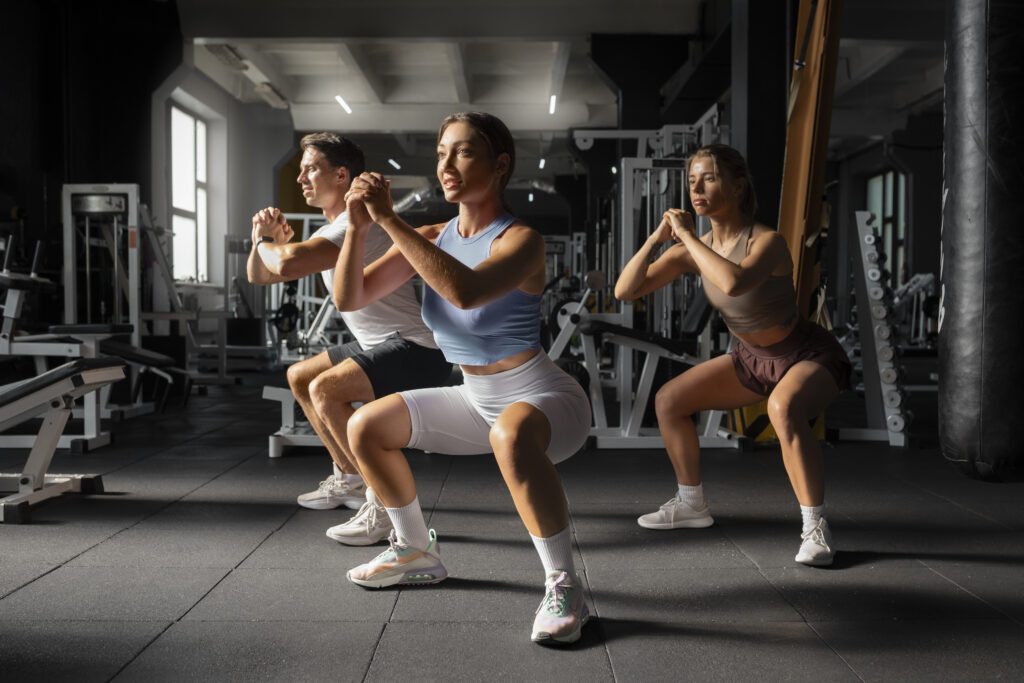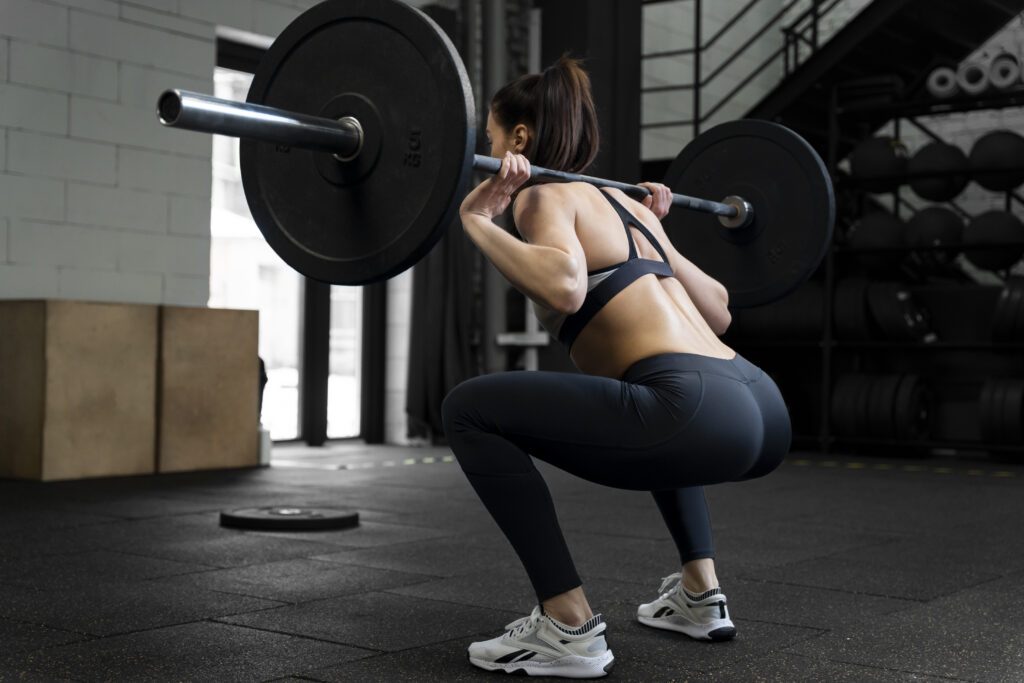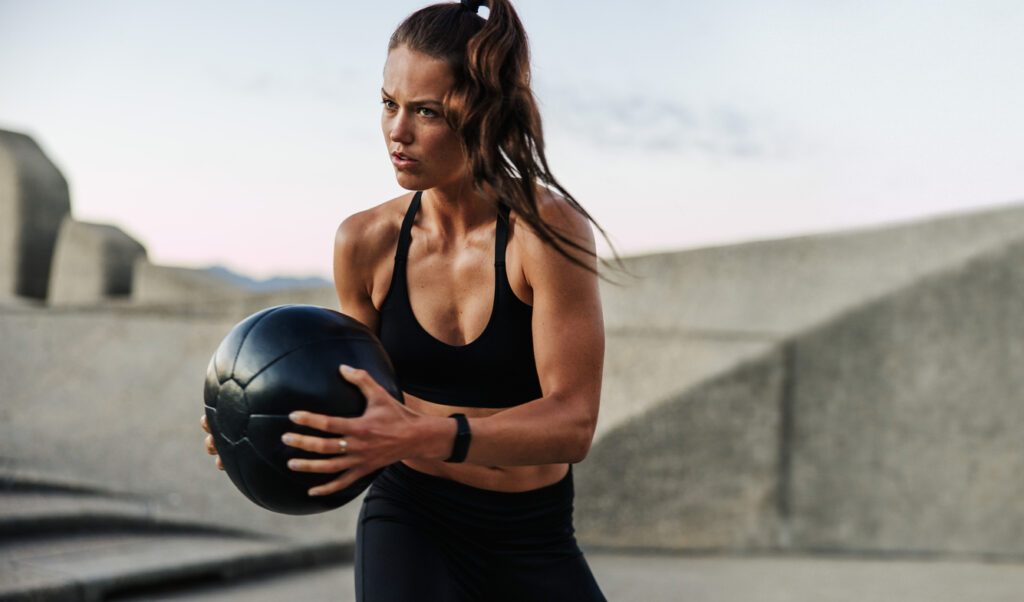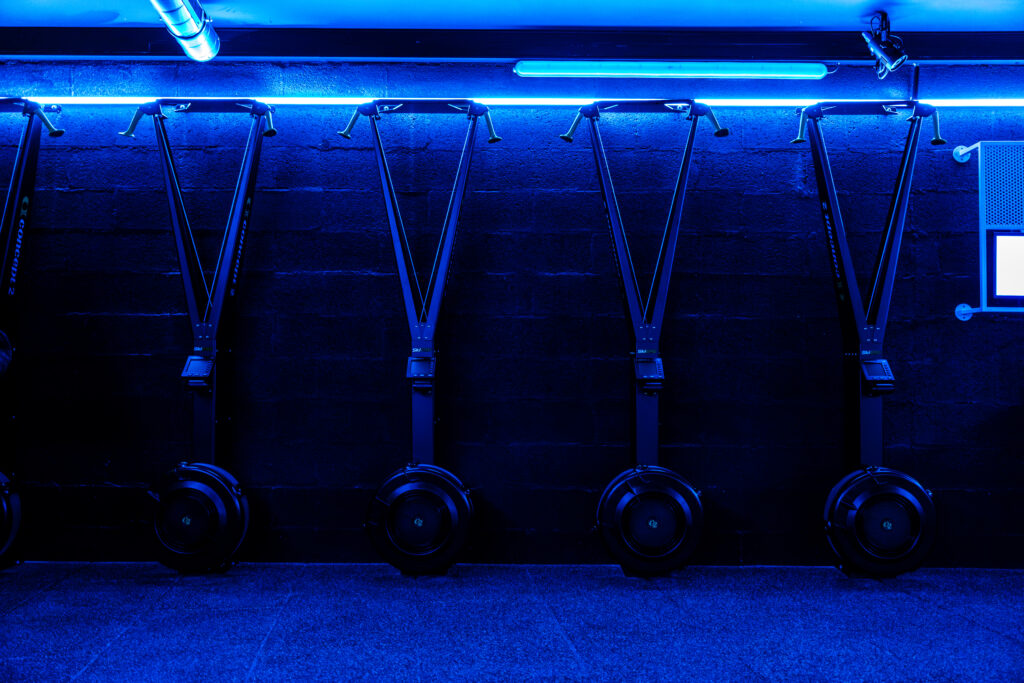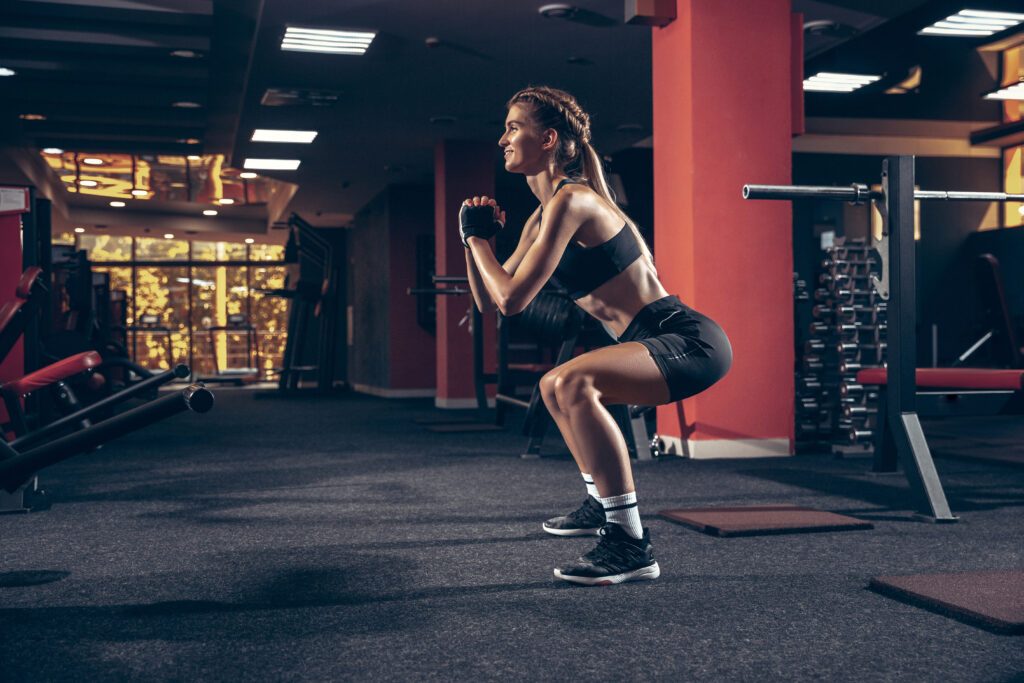
Summary
Welcome / Welcome / Tips for getting started / The Complete Guide to How to Do a Squat
The Complete Guide to How to Do a Squat
Want to know how to do a squat correctly? This article guides you step by step to master this essential bodybuilding technique. Discover the benefits and the muscles used to optimize your workouts.
Understanding the importance of the squat
The squat is more than just an exercise; it improves mobility, balance and posture during your sport. We explain the variations and tips to help you progress effectively. Whether you're a beginner or an advanced exerciser, you'll find the right advice for you. So stop wondering how to do squats.
Benefits of squatting for muscle development and strength
The squat is a fundamental exercise in bodybuilding. It helps you develop considerable strength and build impressive muscle mass in your lower body. By regularly including squats in your routine, you effectively stimulate your muscles, promoting increased growth and power. It's a comprehensive exercise that works multiple muscle groups simultaneously, making each repetition incredibly productive.
Muscles involved in a squat
The squat mainly involves the quadriceps, located at the front of the thighs, the hamstrings at the back of the thighs, and the buttocks. But that's not all! It also engages the muscles of the lower back, the abdominals and even the calves. In other words, the squat is a multi-joint movement that mobilises the whole body, guaranteeing a complete and balanced workout.
Functional benefits of squatting
Beyond muscle and strength gains, the squat offers significant functional benefits. It improves the hip mobility and ankles, improves balance and corrects posture. By performing squats, you work to stabilise your body, which reduces the risk of injury and improves your performance in other physical activities. In short, the squat is not just a body-building exercise, but a fundamental movement for an active and healthy life.
Execute the squat technique correctly
Preparation
Before you begin, it is crucial to prepare properly to perform a squat safely and effectively. Here are some key points to consider:
Choosing the right shoes (flat and stable sole)
The choice of shoes is crucial. Opt for shoes with flat, stable soles. They offer better grip on the ground and optimum support for your feet. A flat sole distributes the weight evenly, ensuring maximum stability during exercise.
Possibly use a weight belt
If you lift heavy weights, a weight belt can be helpful. It helps stabilize the trunk and protect the lower back. However, be careful not to overdo it to allow your stabilizing muscles to strengthen naturally.
Correctly position the bar on the trapezius
Place the bar correctly on your trapezius, slightly above the shoulder blades. This position helps maintain good balance and reduces stress on your shoulders and back. Make sure the bar is centered to avoid any imbalance.
Execution
To succeed in a squat, technique is essential. Here are the movements to follow:
- Feet hip-width apart Position your feet hip-width apart, with the toes pointing slightly outwards. This provides a good base of support.
- Back straight, looking forward : Keep your back straight and engage your abs. Fix a straight point in front of you to keep your head in a neutral position.
- Descend while keeping the weight on your heels As you begin the descent, push your hips backwards while keeping your weight on your heels. This helps to maintain balance and engage the muscles correctly.
- Lower to thighs parallel to the ground (or lower for a "full squat") Continue lowering until your legs are parallel to the ground. For a "full squat", go lower while maintaining good form.
- Exhale while going up : As you come back up, exhale and push through your heels. Straighten your hips and knees simultaneously to return to the starting position.
By following these steps, you can perform a squat correctly, minimising the risk of injury and maximising the benefits of the exercise. Remember that technique takes precedence over load. Work on your form first before adding weight.
Variations of the squat
Traditional squat
How to make it
The back squat, or traditional squat, is performed with a bar placed on the trapezius. Here's how to do it correctly:
- Position yourself under the bar : Place the bar on your trapezius, feet hip-width apart.
- Grip the bar firmly : Hands slightly wider than shoulders.
- Go down keeping your back straight Push your hips back, knees bent, until your thighs are parallel to the floor.
- Come back up by pushing on your heels : Exhale while returning to the initial position.
Mainly used muscles
The back squat mainly uses the quadriceps, glutes and hamstrings. The back muscles and abdominals also play an important stabilizing role.
Squat with barbell in front
How to make it
The front squat is performed with the barbell positioned in front of the shoulders. Here are the steps to follow:
- Place the bar on the front of the shoulders Elbows pointing forward, arms parallel to the ground.
- Grip the bar lightly : Hands shoulder-width apart.
- Go down while keeping your trunk straight Push your hips back, knees bent, until your thighs are parallel to the floor.
- Come back up by pushing on your heels : Exhale while returning to the initial position.
Squat without load
How to run it
The air squat is an unloaded variant, ideal for beginners or as a warm-up. Here's how to do it:
- Position feet hip-width apart Points turned slightly outwards.
- Go down keeping your back straight Push your hips back, knees bent, until your thighs are parallel to the floor.
- Come back up by pushing on your heels : Exhale while returning to the initial position.
Dumbbell squat
How to make it
The barbell squat is a great alternative to the back squat. Here's how to do it:
- Hold a dumbbell in each hand : Arms alongside the body, feet hip-width apart.
- Go down keeping your back straight Push your hips back, knees bent, until your thighs are parallel to the floor.
- Come back up by pushing on your heels : Exhale while returning to the initial position.
Each variation of the squat offers unique benefits and allows you to target the muscles differently. By varying your squats, you can diversify your training and maximize your muscle and strength gains.
Progress with the squat
Choose the right load
Progressing with the squat requires a methodical and gradual approach. Here are some tips for choosing the right load and improving your technique:
Start without weight to work on technique
Before loading the bar, it's essential to master the squat technique. Start with no load to familiarise yourself with the movement. Concentrate on posture, balance and range of movement. A good unloaded squat is the foundation of future progress.
Gradually increase loads and repetitions
Once you've mastered the technique, it's time to add weight gradually. Here's how to do it:
- Add light weights : Increase the load in small increments to avoid injury.
- Increase the repetitions Once you're comfortable with a load, increase the number of repetitions to improve muscular endurance.
- Vary the series The best way to build strength is to use shorter sets with heavier weights to build strength, and longer sets with lighter weights to build endurance.
Monitoring and adjusting progress
To maximize gains, track your performance and adjust your program regularly:
- Keep a training diary : Note the loads, repetitions and sets performed.
- Evaluate your technique : Film your squats to spot and correct mistakes.
- Consult a coach : If possible, seek the advice of a coach for personalized advice.
Adopt adequate nutrition and recovery
Progress with the squat does not depend solely on training. Nutrition and recovery also play a crucial role:
- Food : Consume enough protein for muscle rebuilding and carbohydrates for energy.
- Recovery : Give your muscles time to recover between sessions. Sleep and rest days are essential to avoid overtraining and injury.
By following these tips, you will be able to progress effectively with the squat, safely, while maximizing your gains in strength and muscle mass.
Specific benefits of squatting
Weightloss
The squat is an exceptional exercise for weight loss. Here's why and how it helps burn calories:
Complete exercise burning lots of calories
The squat is a polyarticular movement, which means that it calls on several muscle groups simultaneously. By recruiting muscles such as the quadriceps, glutes and hamstrings, the squat significantly increases energy expenditure. The more muscles you engage, the more calories you burn, which helps to keep you fit. weightloss.
Example of a squat circuit to promote calorie expenditure
To maximise calorie expenditure, incorporate squats into a training circuit:
- Squat with jump : 15 repetitions
- Burpees : 10 repetitions
- Squat with dumbbells : 12 repetitions
- Mountain climbers : 30 seconds
Repeat this circuit 3 to 5 times with a short break between each set. This type of routine increases your heart rate and optimizes calorie burning.
Glute development
Squats are particularly effective for developing the glutes. Here's how to use this exercise to maximize results:
Full amplitude to target the glutes
To target the glutes effectively, it's crucial to go down to full amplitude, i.e. until the thighs are at least parallel to the ground. Greater amplitude increases activation of the gluteal muscles.
Tips for a Deep and Effective Squat
- Hip warm-up : Before you begin, perform hip mobility exercises to improve your range of motion.
- Correct posture Keep your back straight and your abdominal muscles engaged to avoid injury and maximise muscle activation.
- Use of suitable loads : Choose a load that you can safely control while reaching the desired depth.
By following these tips, you can optimize your glute development and get the most out of your squat sessions.
Conclusion
The squat is a fundamental exercise for developing strength and muscle mass. By mastering the different variations, you optimize your training and your results. Following proper progression and adopting correct technique are essential to avoiding injury.
Squats involve many muscles and offer specific benefits such as weight loss and gluteal development. They also improve mobility, balance and posture. Tailor your training to your goals to maximise gains.
Work your glutes at DRIP
Push your limits and strengthen your body with DRIP! Participate in intense and effective 50-minute sessions.
At DRIP, experience the action through 7 dynamic workshops in 3 series, with every second a new challenge. Our passionate trainers will motivate you with lively playlists. Suitable for all levels, DRIP is the perfect place to work your thighs to the max. You'll love hating us! ❤️🔥
Share
Tagged
Read also
follow us
on instagram
To follow all our news,
take advantage of our tutorials and participate
in our many competitions.
BREAKING NEWS!
Receive our newsletter.
